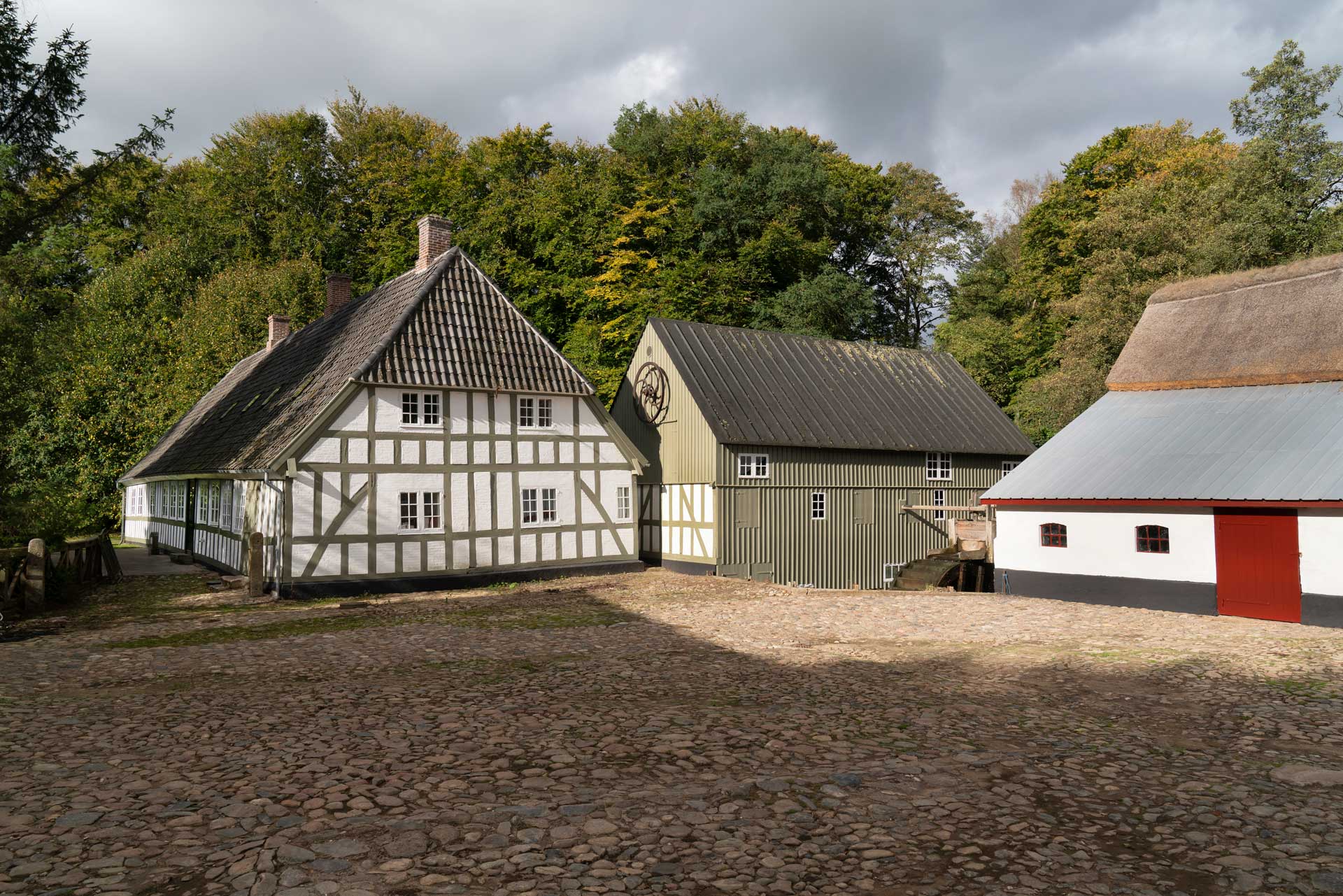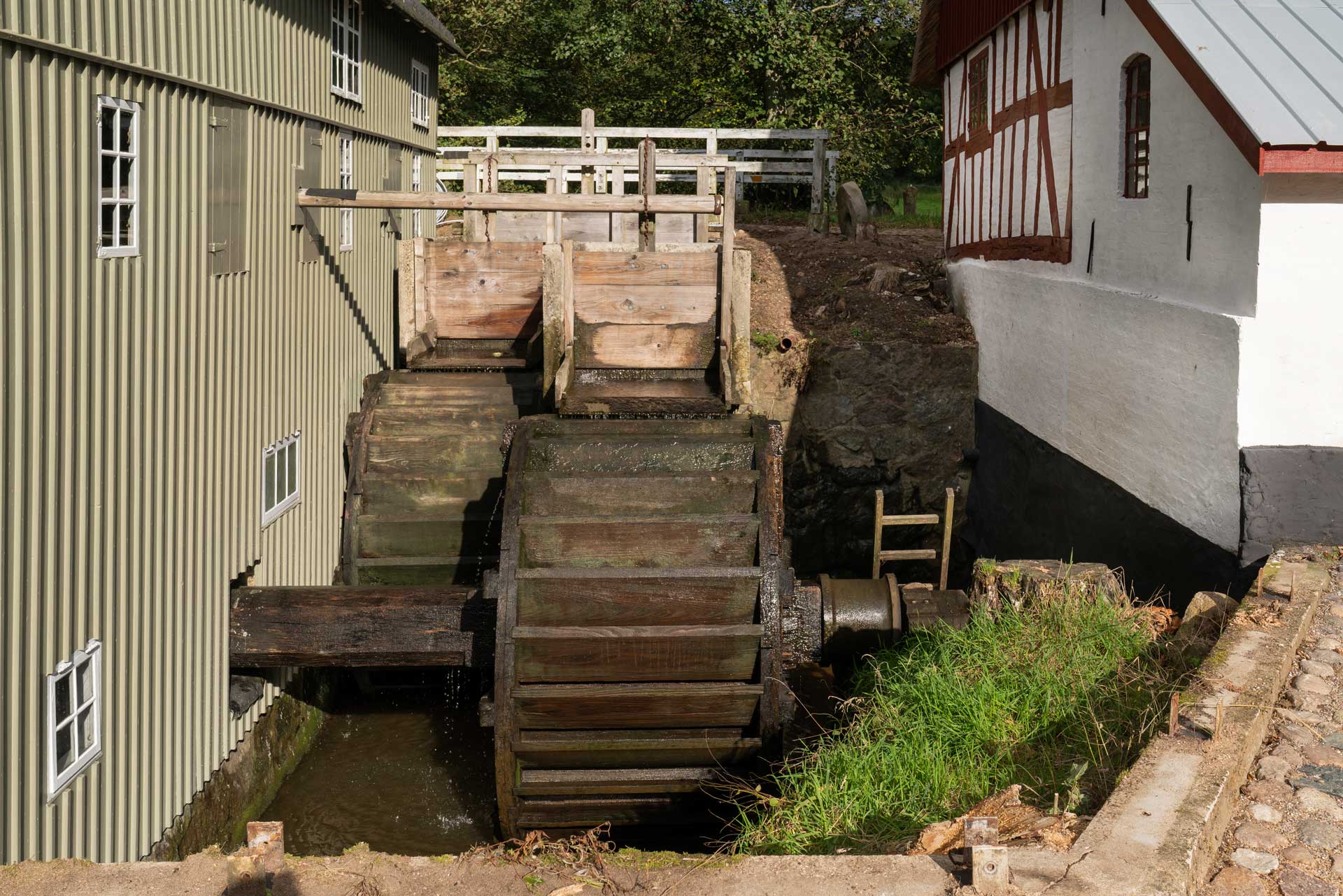Log ind info
Gammelby Mill with the waterwheel, miller’s house, farm buildings, and surroundings with the millpond constitute a unique cultural environment that bears witness to the significance and exploitation of hydropower in Danish agriculture before industrialisation.

Gammelby Mill lies between Fredericia and Vejle, beautifully situated between tall deciduous trees in an undulating terrain. The hilly landscape is ideal for a watermill, providing a secure natural water supply. The present mill was built in 1827, but the history of a mill on the site stretches back to 1579. Besides the mill, the property comprises a miller’s house, a former farm garden, a three-winged farm building as well as the surrounding landscape with millpond and weir. The cultural site holds a narrative about Denmark as an agricultural and food-producing country in a pre-industrial world.
Gammelby Mill is a watermill with two waterwheels powering a mill with three grinders to mill wheat and barley. The mill also has the remains of a stamp mill for processing wool. In the pre-industrial world, exploiting hydropower was very important in producing and processing raw materials.
The undulating landscape in Elbodalen has provided good conditions for water-mill operation since Gammelby Mill was founded in 1579. Water is dammed up in the elevated millpond, then gushes down with great power to the lower lying waterwheels. Today, the mill, miller’s house and millpond landscape have been listed in order to preserve the site in its entirety. The strong relationship is also visible architecturally, as the stone paving extends from the road by the mill, through the portal in the north wing and into the courtyard.
Gammelby Mill is unique, because the property stands as one single cultural environment. The buildings were constructed in strongly dimensioned and colourful timber, with a double sill at the base, as was typical for the area. Furthermore, the wings of the farm are combined with a continuous roof that further underlines the composition of the whole. The large installations reflect the position of the miller as an important and wealthy man in Danish agricultural society. The large and regularly expanded farm buildings also suggest that, over time, the mill changed, with farming taking increasing importance for life at the mill.
Gammelby Mill is part of Realdania By & Byg's portfolio of Danish architecture, and it is a well-preserved example of a type of building holding a narrative about life and architecture before industrialisation; a type of building that has influenced every local community, but of which very few remain today.
The restoration was completed in late 2024. The buildings will live on as a home for a family. Letting the buildings out creates a financially sustainable basis for ongoing operation and maintenance.

Gammelby Møllevej 62, 7000 Fredericia
1579/1827
Mid Jutland
Classicism